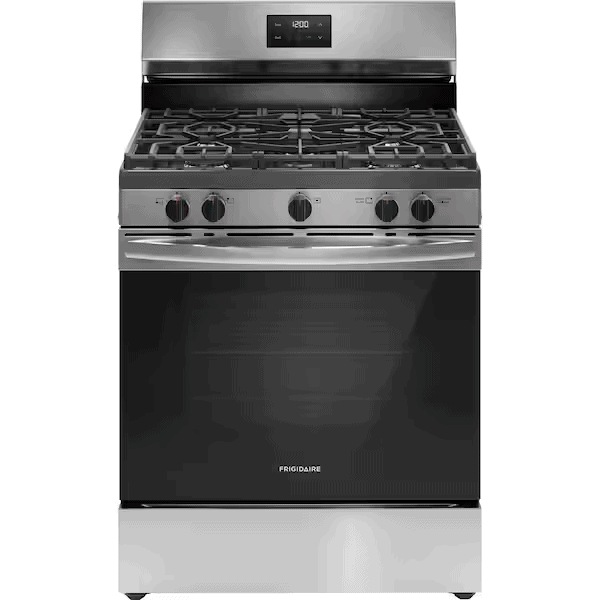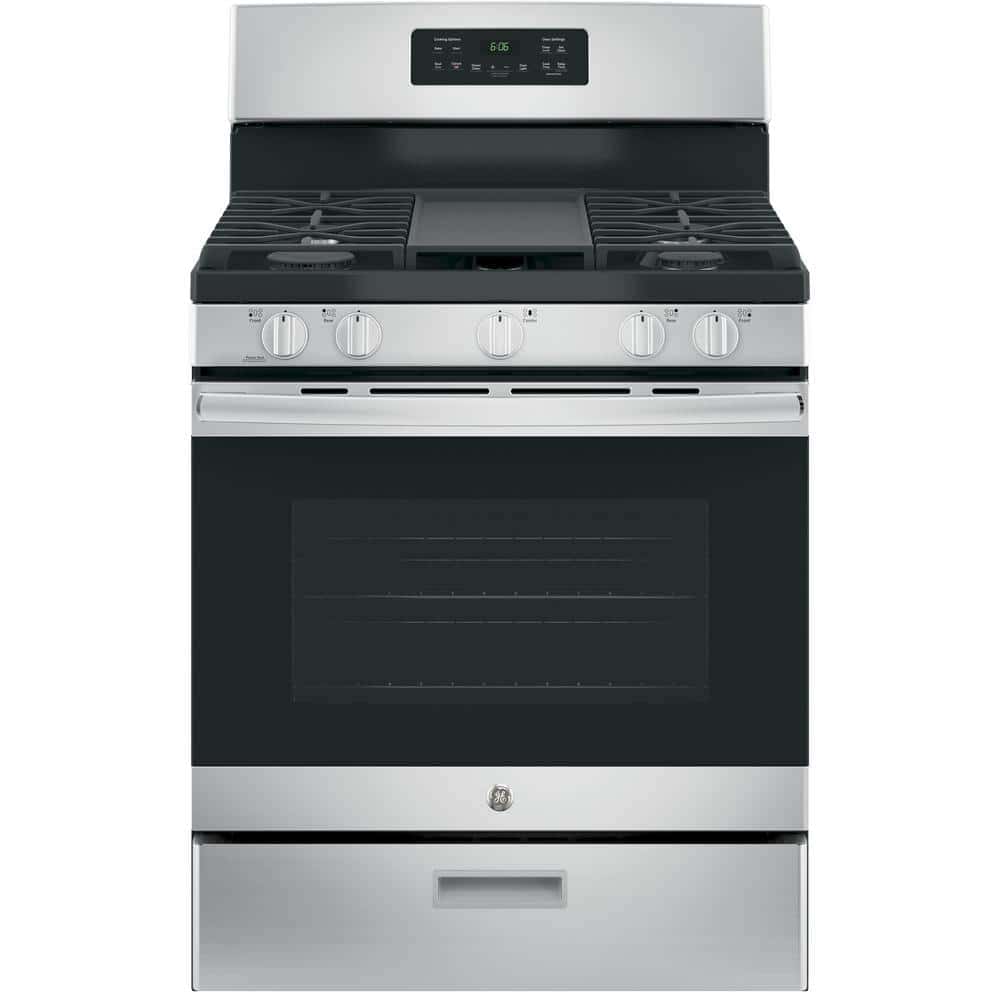Gas ovens have become essential kitchen appliances in homes and restaurants. They offer efficient cooking and baking capabilities, making meal preparation easier for families and professional chefs alike. Many well-known brands produce gas ovens for residential and light commercial use, including LG, Bosch, Kenmore, GE, Samsung, KitchenAid, Whirlpool, and Frigidaire.
When a gas oven stops heating properly, it can disrupt cooking routines and cause frustration. Several common issues may lead to this problem, such as a faulty igniter, damaged spark electrode, or malfunctioning thermostat. Understanding these potential causes can help homeowners troubleshoot and potentially resolve the issue before seeking professional assistance.
Troubleshooting Your Gas Oven’s Heating Issues

Common Causes of Heating Problems
A gas oven that doesn’t heat right can be frustrating. Several things can cause this. Here are some common reasons:
- Igniter Problems: The igniter is the most common culprit. It’s an electrical component that glows and ignites the gas. If it’s weak or broken, it won’t light the gas. A working igniter should glow brightly for a few seconds before the gas ignites. If it glows dimly or not at all, it likely needs replacing.
- Gas Supply Issues: A problem with the gas supply can also prevent the oven from heating. This could be a problem with the gas line to your house, or a problem with the valve that controls gas flow to the oven. Check if other gas appliances in your home are working. If not, there’s likely an issue with the main gas supply.
- Faulty Bake or Broil Burner: The bake and broil burners are the parts that actually burn the gas to produce heat. If they are damaged or clogged, they won’t work correctly. Check for any visible damage to the burners, such as cracks or corrosion. Also, make sure the burner ports are clear of debris.
- Temperature Sensor Malfunction: The temperature sensor tells the oven’s control board how hot it is. If the sensor is faulty, the oven may not reach the correct temperature. You can test the sensor with a multimeter to see if it’s working properly.
- Control Board Issues: The control board is the oven’s “brain.” If it’s malfunctioning, it can cause various heating problems. This is less common than other issues but still possible.
Troubleshooting Steps
Here’s what you can do to try and fix the problem:
- Check the Igniter: Look at the igniter when you turn on the oven. Does it glow brightly? If not, replace it. This is often an easy DIY fix.
- Check the Gas Supply: Make sure other gas appliances are working. If not, contact your gas company.
- Inspect the Burners: Look for damage or clogs. Clean the burner ports with a small brush or wire.
- Test the Temperature Sensor: Use a multimeter to check its resistance. You can find instructions online for your specific oven model.
- Check for Error Codes: Some ovens display error codes that can help you diagnose the problem. Consult your owner’s manual.
When to Call a Professional
If you’ve checked these things and your oven still doesn’t heat, it’s time to call a qualified appliance repair technician. Dealing with gas can be dangerous, so it’s best to leave some repairs to the pros. Especially if you suspect a gas leak.
Table of Common Problems and Solutions
| Problem | Possible Cause | Solution |
|---|---|---|
| Oven doesn’t heat at all | Faulty igniter | Replace the igniter |
| Oven doesn’t heat at all | Gas supply issue | Contact gas company |
| Oven heats unevenly | Dirty or damaged burner | Clean or replace the burner |
| Oven temperature is inaccurate | Faulty temperature sensor | Replace the temperature sensor |
| Oven not heating and error code displayed | Control board issue | Contact a technician |
Oven Maintenance Tips
Regular maintenance can help prevent heating problems. Here are some tips:
- Clean the Oven Regularly: Remove spills and food debris. This prevents clogs and helps the oven heat efficiently.
- Check the Burners Regularly: Look for damage or clogs. Clean them as needed.
- Schedule Professional Inspections: Have your oven professionally inspected every few years. This can catch small problems before they become big ones.
Keeping your oven clean and well-maintained can help it last longer and work better. If you have heating problems, start with the simple checks like the igniter and gas supply before moving on to more complex repairs. If you aren’t comfortable working with gas or electricity, calling a technician is always the safest choice.
Beyond oven maintenance, understanding the basics of gas appliance safety is crucial for any homeowner. One important aspect is knowing how to detect a gas leak. The most common sign is a distinct rotten egg smell, which is added to natural gas for safety reasons. If you smell gas, immediately leave the house and contact your gas company or the fire department from a safe location. Other signs of a gas leak can include a hissing sound near gas lines or appliances, dead or dying vegetation in a specific area, or unusual physical symptoms like dizziness or nausea. Installing carbon monoxide detectors is also vital, as carbon monoxide is a colorless, odorless gas that can be produced by malfunctioning gas appliances. These detectors provide an early warning of dangerous carbon monoxide levels, allowing you to take appropriate action.
A gas oven not heating properly can disrupt meal plans and cause frustration. By understanding the common causes and taking the proper steps, you can often fix the issue or know when to call for professional help. Remember safety first when dealing with gas appliances.
Key Takeaways
- Gas ovens are widely used in homes and restaurants for efficient cooking
- Common heating issues include faulty igniters, damaged electrodes, and thermostat problems
- Troubleshooting can help identify the cause, but professional repair may be necessary
Why Your Gas Oven Fails to Heat Up: Common Causes
A gas oven may stop heating properly due to a faulty igniter, which should be checked first. A functioning igniter glows brightly, while a weak one needs replacement, typically costing $15-$30. It’s also important to check for gas supply issues by testing other gas appliances. If you smell gas, leave immediately and contact your gas company. Regular maintenance, like cleaning spills and checking burners, can help prevent future problems.
#1 – Ignition System Malfunction
Gas ovens rely on a functional ignition system to start heating. When this system fails, the oven won’t heat up. Signs of a faulty igniter include:
- No glowing when the oven is turned on
- Burner doesn’t light after several minutes
- Clicking sounds without ignition
To check the igniter, turn on the oven and observe. If it doesn’t glow or the burner doesn’t light, the igniter may need replacement.
#2 – Spark Electrode Issues
Some gas ovens use a spark electrode instead of a glowing igniter. This part can wear out or become damaged. Signs of a problematic spark electrode include:
- No visible spark when the oven is turned on
- Intermittent sparking
- Weak spark that doesn’t ignite the gas
Inspect the electrode for visible damage or corrosion. If issues are found, it may need to be replaced by a professional.
#3 – Thermostat Failure
The thermostat regulates oven temperature. When it malfunctions, the oven may not heat properly. Symptoms of a bad thermostat include:
- Oven doesn’t reach set temperature
- Temperature fluctuates widely
- Oven doesn’t turn off when set temperature is reached
Testing a thermostat requires specialized tools and knowledge. Consider calling a repair service if you suspect thermostat issues.
#4 – Incorrect Temperature Calibration
Sometimes, an oven may heat but display the wrong temperature. This can be due to improper calibration. Signs include:
- Food consistently over or undercooked
- Oven feels hotter or cooler than the set temperature
- Significant difference between oven and separate thermometer readings
Many ovens have a built-in calibration feature. Check your oven’s manual for instructions on how to recalibrate.
#5 – Control Board Malfunction
The control board manages all oven functions. If it fails, the oven may not heat. Symptoms of a faulty control board include:
- Oven doesn’t respond to temperature settings
- Display shows error codes
- Multiple functions fail simultaneously
Control board issues are complex. They often require professional diagnosis and repair.
Remember, gas oven repairs can be dangerous. If you’re unsure about any repair, it’s best to contact a professional technician.
Fixing a Gas Oven That Won’t Heat
A non-heating gas oven can disrupt cooking plans. Several issues may cause this problem. Gas ovens have multiple components that work together. When one part fails, the oven may not heat properly.
The oven igniter is a common culprit. It lights the gas to heat the oven. Over time, igniters weaken. This can prevent the oven from reaching high temperatures. To check the igniter:
- Use a multimeter to test for continuity
- Look for a continuous electrical path
- Replace the igniter if damaged
Gas supply problems can also cause heating issues. Check these points:
- Ensure the gas supply valve is fully open
- Verify the gas line is not kinked or damaged
- Call the gas company to confirm service is active
The temperature sensor may malfunction. This part monitors oven temperature. To test it:
- Use a multimeter to check resistance
- Compare readings to the manufacturer’s specifications
- Replace the sensor if readings are off
A faulty gas valve can prevent proper heating. The valve controls gas flow to the burner. Signs of a bad gas valve include:
- No gas smell when the oven is on
- Burner doesn’t ignite
- Uneven heating
The oven’s circuit breaker may have tripped. Locate the breaker panel and check if the oven’s switch is in the “off” position. Flip it back on if needed.
For slow heating ovens, try recalibrating:
- Preheat to 350°F (175°C)
- Use an oven thermometer to check temperature every 20 minutes
- Take readings for 90-180 minutes
- Calculate the average temperature
- Adjust the oven’s temperature dial accordingly
If these steps don’t solve the problem, the control board or relay board may be faulty. Look for:
- Burn marks
- Short-circuited elements
- Other visible damage
An oven control board issue requires professional repair in most cases.
Remember, gas oven repairs can be dangerous. Always prioritize safety. If unsure about any repair step, contact a certified technician for assistance.







